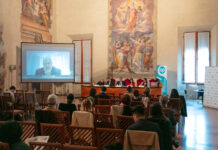by Arianna Morandi
Some observers have criticised the high cost of the Extraordinary Chambers, pointing to political interference and procedural disputes. Indeed, the investigations have suffered from the Court’s limited jurisdiction, and constant pressure from Government authorities and have been weakened by corruption cases involving Cambodian judges. Many former Khmer Rouge judges are now in power, most notably former Prime Minister Hun Sen, in office from 1984 to August 2023, who has always been reluctant to shed full light on the country’s history, believing it better to ‘dig a hole and bury the past’.
A number of international judges have resigned over the years, directly challenging the Government in Phnom Penh, which is accused of influencing the work of Cambodian judges. Political interference was evident in cases 003 and 004, undermining the quality and quantity of justice the Extraordinary Chambers could deliver. The two cases concerned the investigation of four former Khmer Rouge men who had held positions of responsibility at the regional level or within the armed forces; the cases were dismissed in the absence of a final indictment. While the Court’s international staff supported the continuation of these investigations, the Cambodian Government and judges opposed and blocked them.
While the Court’s legacy remains controversial, the Extraordinary Chambers introduced important innovations. They allowed victims to participate in the proceedings, setting a valuable precedent for the ICC and other justice mechanisms. In the case of Khieu Samphan and Nuon Chea, for example, some 3,800 civil parties came forward; they were recognised as parties to the proceedings and were able to seek collective and moral reparations. The decision to locate the Court in Cambodia, the direct access to the hearings and the possibility of hearing in three languages, including Khmer, enabled more than 400,000 people to attend the public hearings, far exceeding the numbers recorded in other international judicial institutions. The Court commissioned free bus services for the rural and urban population.
The Court established fruitful cooperation with several non-governmental organisations, in particular the Documentation Centre of Cambodia, an independent institute dedicated to the historical documentation of Democratic Kampuchea (as Cambodia was known under the Khmer Rouge).
Cambodia’s fragile judicial system was also able to cope with the international rules and the foreign judges and staff working at the Court. However, it will take years to assess whether this international presence has had a long-term impact on the Cambodian judicial system.
In January 2023, under an agreement between the UN and the Cambodian Government, the Court began to carry out so-called residual functions. It stipulates that for at least three years, the Court must declassify judicial documents, oversee the execution of sentences, monitor reparations and continue outreach and education activities with civil society organisations and survivors. This broad mandate differs from the narrower mandates of the UN-backed Courts for the former Yugoslavia and Rwanda.
Today, it is in these functions that the greatest achievements are being recorded. The Court is releasing thousands of judicial documents, photographs and videos, as well as materials from the Khmer Rouge period and the trials. Anyone working on the history of the Khmer Rouge in Cambodia has to work with the trilingual material produced by the Court.
On the cover photo, view of Toul Sleng Genocide Museum ©Thanachet Maviang/Shutterstock.com
























